June 03, 2024
Electrification, A Momentum for Public Transport Reform
By Rifqi Khoirul Anam, Transport Associate I ITDP Indonesia
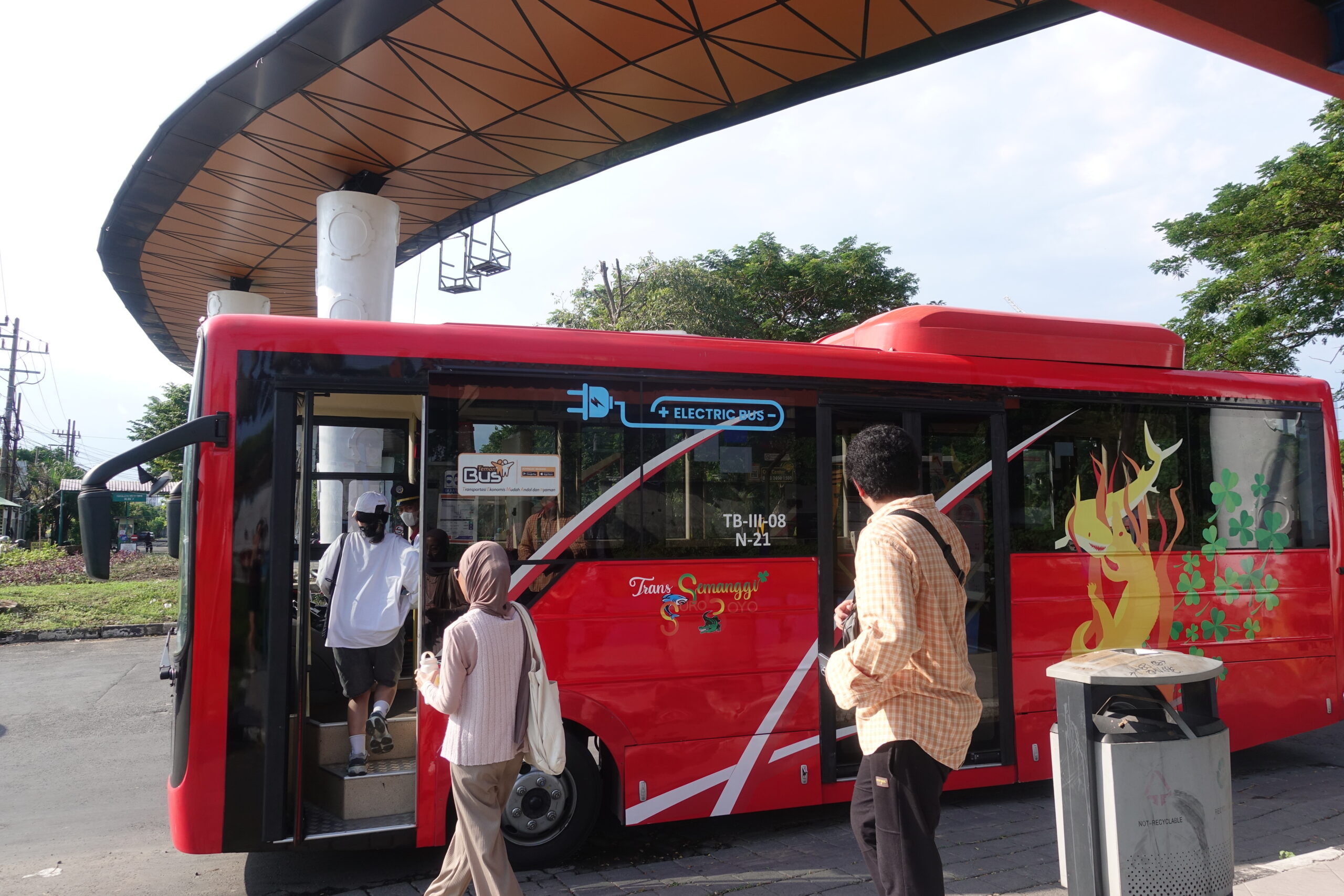
Over the past year, we have been filled with social media posts about severe traffic jams on several roads in the morning. Not only in Jakarta, but public roads on the borders of Tanggerang, Surabaya, and Bandung are packed with motorcycles and cars stuck in traffic for hours. Even in 2023, the Head of the West Java Transportation Agency, A. Koswara, revealed that the level of private motor vehicle use in Bandung reached 87%! Not to mention the decline in air quality in cities in Indonesia, where private motorized vehicles contribute to the emergence of an increase in Acute Respiratory Infections (ISPA) diseases in children and other vulnerable groups in which the transportation sector contributes to one of the leading causes of poor air quality.
Absence of Urban Public Transportation Services
The phenomenon above is probably what many of us urban citizens feel today: choosing to use polluting private vehicles because we don’t have the option to use fast, convenient, cheap, and zero-emission public transportation. Out of 44 urban areas with public transportation services, 19 will no longer operate by 2023. The quality of the mass transit systems currently operating in 25 cities is uncertain, that is why millions of residents in these 25 cities are not willing to use the mass transit systems provided. With limited sustainable mobility options and high levels of private vehicle use and congestion, Indonesia’s six metropolitan areas are estimated to lose up to IDR 77 trillion (US$1.2 billion) [1].
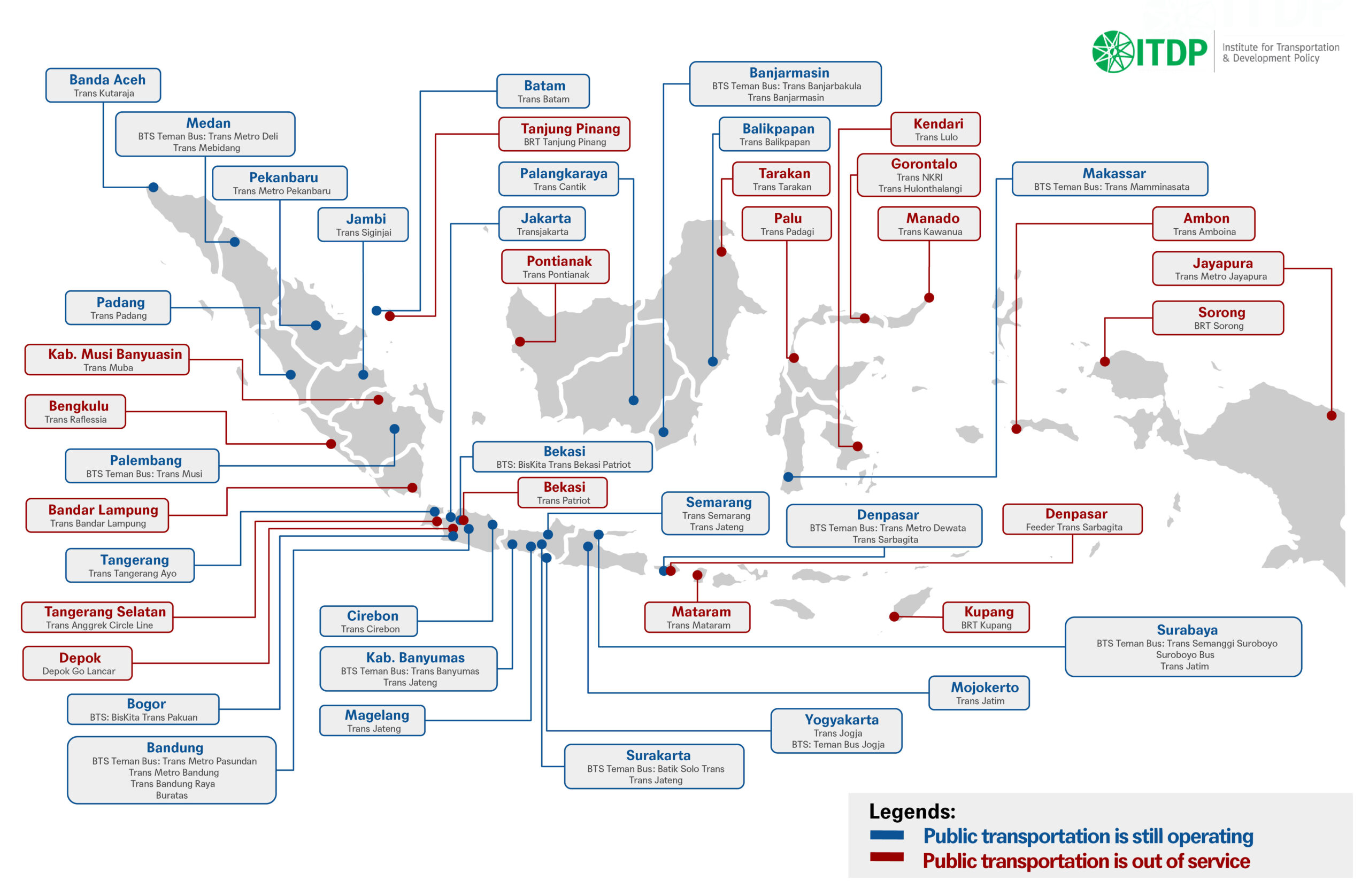
The Electrification Support Starts with Electric Buses
Since 2019, the Indonesian government has focused on accelerating the adoption of Battery Electric Vehicles (KBLBB) for road transportation, one of the goals of reducing high GHG emissions and air pollution. In response, the Ministry of Transportation set ambitious targets to electrify 90% and 100% of urban mass public transport by 2030 and 2040, respectively, and electrify all public transport – including microbus services (angkot) by 2045. However, these targets do not yet have a solid regulatory framework, which leaves uncertainty about the availability of sufficient budget to realize the targets. In addition to public transport fleets, the Indonesian government also targets the adoption of 13 million electric motorcycles and 2 million electric cars by 2030.

Only 124 electric buses are used for urban public transportation in 3 cities, accounting for 0.80% of the target the Ministry of Transportation set in 2030. This indicates the low adoption of KBLBB to date. The adoption of KBLBB for 2-wheelers and 4-wheelers is also still low from the target set by the government: as of October 2023, only 0.58% and 1.02% of the target set for 2030, respectively.
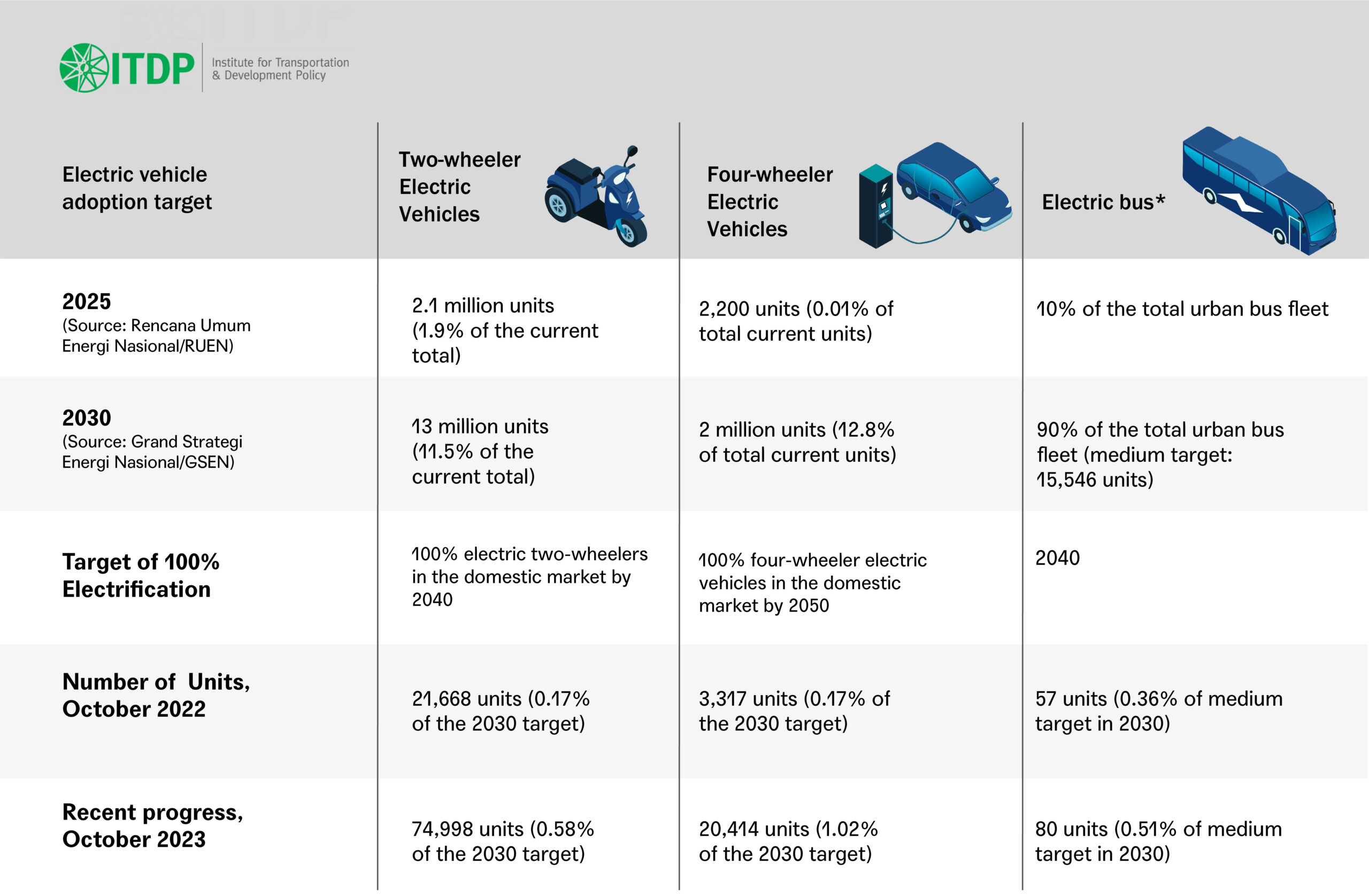
The Government of the Republic of Indonesia provides several incentives to stimulate the penetration of KBLBB. The incentives provided target the provision of KBLBB from manufacturers (supply) and the use of KBLBB by vehicle users (demand). The variety of incentives offered varies for 2-wheeled vehicles, 4-wheeled vehicles, and electric buses. One form of incentive provided by the central government since 2023 is VAT incentives for 4-wheeled vehicles and electric buses, as well as subsidies for purchasing electric motorbikes of IDR 7 million/unit in 2023 and IDR 10 million/unit in 2024. However, the proposed budget size for KBLBB incentives still focuses heavily on private 4-wheelers and 2-wheelers, not electric buses that can be used for urban public transportation fleets.

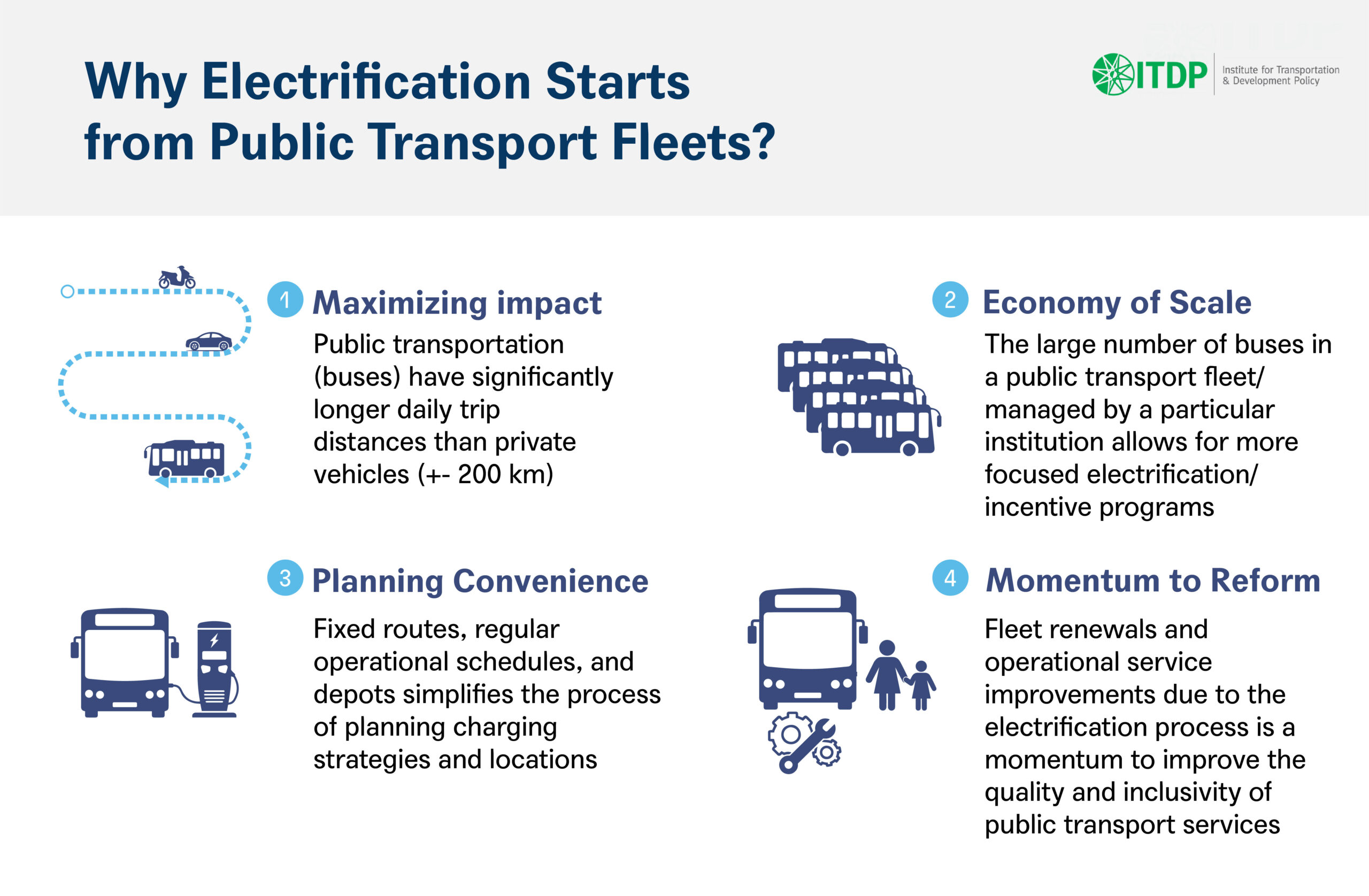
We Need More Buses (Electrified)
Ensuring good urban public transportation services necessitates a sufficient public transportation fleet. However, the current population-to-bus ratio in Indonesian cities lags significantly behind that of global cities. For instance, major cities like Singapore, Taipei, Seoul, London, New York, and Shenzhen maintain a ratio between ~750 – 1,500. Comparatively, as a fellow capital city of a developing country, New Delhi’s 1 bus unit caters to ~2,500 residents, only half of Jakarta’s (~5,000). Shockingly, 1 bus unit in Indonesian cities other than Jakarta serves a much larger population. On average, 1 bus unit in BTS Teman Bus cities serves ~22,000 people, 4.5x higher than Jakarta.
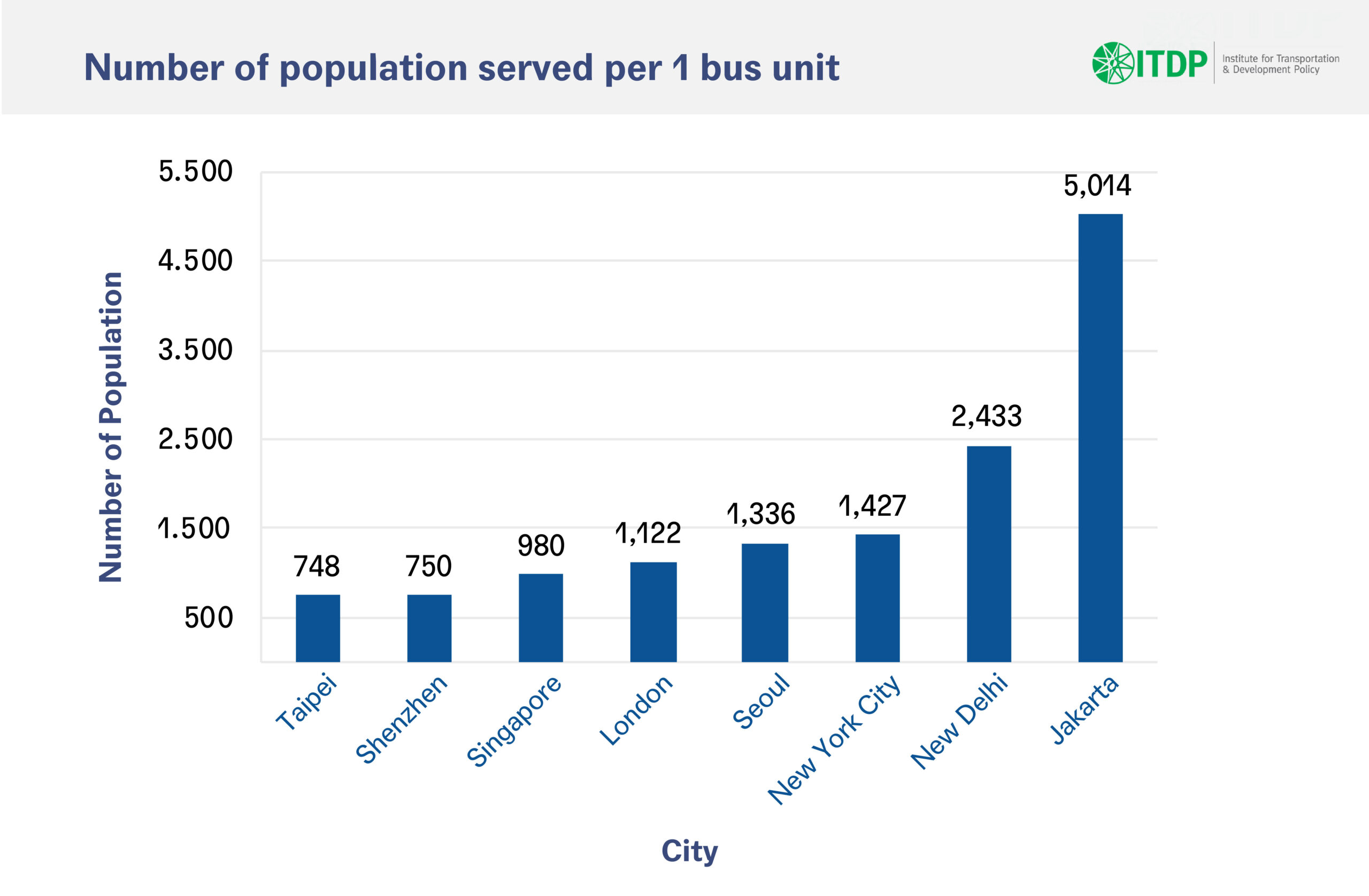
The mode share of public transportation in these global cities is also relatively high, ranging from 22% to 60%, far above the mode share of public transit in major cities in Indonesia, ranging from only around 2-15% [2], including the Special Region of Jakarta on 10.27% [3]. On the other hand, almost all BTS Teman Bus corridors in 10 cities still need to meet the standard number of passengers/bus/day, indicating low fleet utilization by passengers.
Therefore, through the study “National Roadmap and Incentive Program for Road-based Public Transport Electrification,” ITDP recommends that electrification should not only be a momentum to replace conventional bus fleets with electric buses simply but also gradually increase urban public transportation fleets with zero emission fleets so that future public transportation fleet needs can be met.
Reference:
- Kemacetan Menggila Bikin RI Rugi Triliunan, DKI Sampai Rp65 T (Oktober 2023).
- Country Climate and Development Report: Indonesia 2023. World Bank Group.
- Country Climate and Development Report: Indonesia 2023. World Bank Group.
Read the document titled “National Roadmap and Incentive Program for Road-based Public Transport Electrification.”
